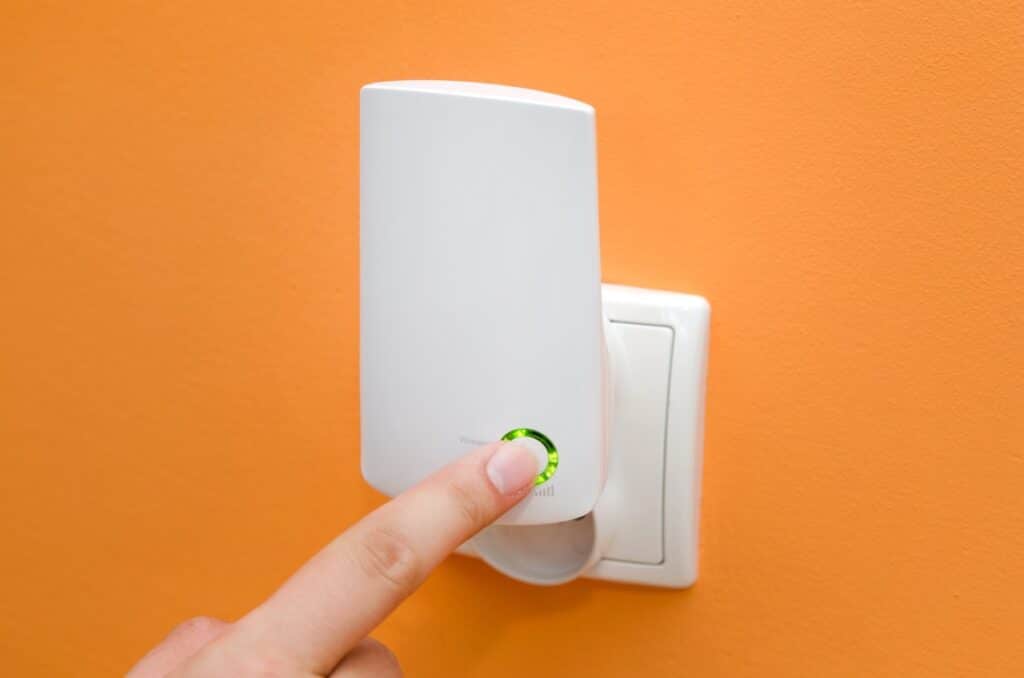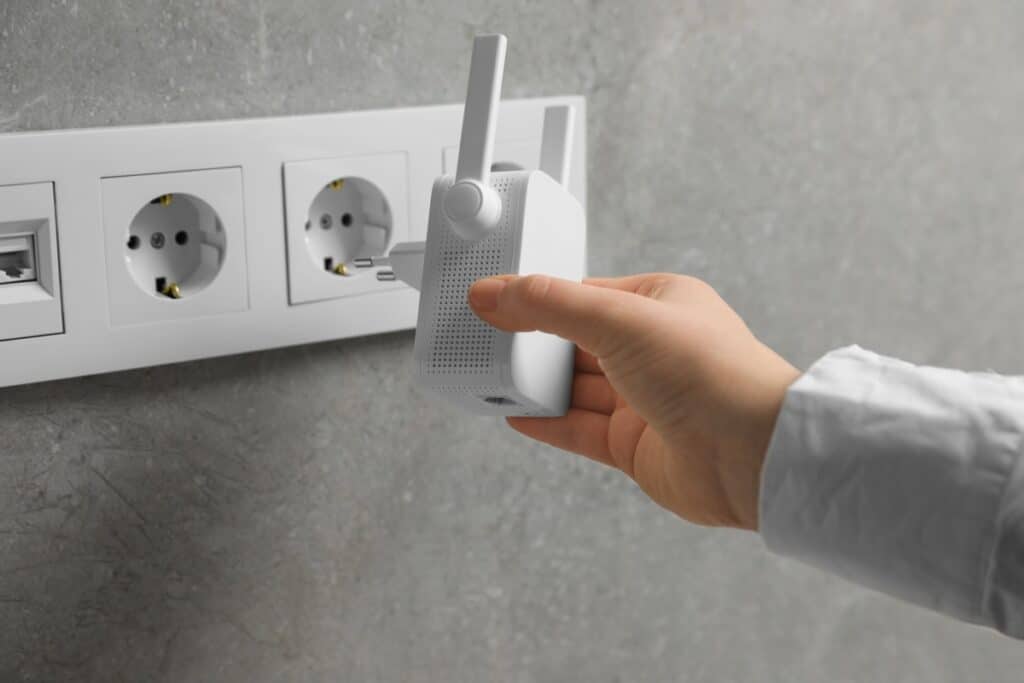the essentials in brief
A WLAN repeater receives this Signal from the router and sends it on in amplified form. You can find details here.
A WLAN repeater increases the range of the WLAN signal and thus improves the signal quality and strength. You can find out more here
The cost of a WiFi booster can vary depending on quality and brand. As a rule, however, you can purchase a simple WiFi amplifier for around 20 euros. You can find out here what you should pay attention to.
You surely know this: You're sitting comfortably on the sofa, want to stream a film or send an important e-mail, but the WiFi signal leaves a lot to be desired. Constant stuttering and long loading times make surfing the Internet a pain. On WiFi booster can help here and optimize your WiFi signal. In this blog post you will learn what a WiFi repeater is, how it works and what advantages it offers. We will also introduce you to the most important factors that you should consider when buying a WiFi repeater.
Contents
What is a wifi booster?

A WiFi booster, also known as a WiFi repeater or WiFi extender, is a device that strengthens and expands the WLAN signal. It is placed between your WiFi router and end devices such as smartphones, tablets or laptops, thereby increasing the range of the WiFi signal. A WLAN repeater is particularly suitable in larger apartments or houses where the WLAN signal does not reach all rooms.
How does a WiFi booster work?
In order to understand the function of the WLAN repeater, it is helpful to take a closer look at how WLAN works. WLAN is based on radio technology, that sends and receives signals over a specific frequency. Most wireless routers broadcast signals on a 2,4 GHz or 5 GHz frequency. The Signals have a limited range and can be weakened or blocked by walls, ceilings, and other obstacles.

If the WiFi signal does not reach all corners of the house or garden, a WiFi repeater can help. By placing the booster close to the router, it can amplify and pass the signal. This will make the Increased signal range and the signal can be received even in distant corners of the house or garden.
What should you pay attention to when buying a WiFi repeater?
Before you buy a WiFi booster, you should do some important factors observe. Here are the most important aspects to look out for:
- Compatibility: Make sure the wifi range extender is compatible with your wifi router. Not every amplifier works with every router.
- Speed: Make sure the amplifier supports the same speed as your router. For example, if your router supports a speed of 300 Mbit/s, the WiFi repeater should also have at least this speed.
- WLAN standard: The WLAN standard specifies the technology with which the signal is transmitted. The current WLAN standard is 802.11ac. Make sure that the WiFi extender supports this standard to ensure optimal Performance to achieve.
- Antennas: The more antennas a WiFi repeater has, the better the signal strength
Tip: The amplifier should ideally in the middle placed between the router and the end devices. As a result, the signal is transmitted more evenly and optimal coverage is achieved.
Is my WiFi router suitable for an amplifier?
If you're looking to buy a WiFi extender, it's important to make sure it works with your WiFi router is compatible. There are different standards that WiFi routers support, and it's important to check if your router is compatible with a specific WiFi range extender.

As a rule, most wireless routers support the 802.11n and 802.11ac standards. If your router supports an older standard like 802.11g or 802.11b, you should make sure that the amplifier is also compatible with these older standards.
To check if your WiFi router is compatible with a specific WiFi range extender, you should go to check the packaging or the website of the amplifier. Most manufacturers indicate the WiFi standards that the extender supports. You should also check your router's specs to make sure it's compatible with the amp.
Another way to check compatibility is to use the Try wifi booster. Many WiFi extenders offer a return option if they are not compatible with your router. So you can try the amp and return it if it doesn't work.
Note: If you are unsure whether your WiFi router is compatible with a specific WiFi repeater, you can also Customer Support contact the manufacturer. They can usually tell you if the amp is compatible with your router and help you choose the right amp.
This is how you set up a WiFi repeater
Setting up a WiFi extender can be a challenge at first glance. But with one few easy steps it is an easy task:
Step 1: Booster Positioning The Booster should ideally be placed close to the router and in the middle of the areas where you want to improve the signal. Make sure there are no obstacles such as walls or metal objects blocking the amplifier.
Step 2: Establishing a connection to the network The wifi range extender must be connected to the network in order to amplify the signal. To do this, it must be plugged into the socket and put into setup mode.
Step 3: Browser setup Open a web browser on a device connected to the WiFi network and enter the IP address of the amplifier. Various information such as the network name (SSID) and the password (passphrase) are entered during setup.
Step 4: Establishing a connection to the WiFi router After the setup is complete, the WiFi repeater must be connected to the WiFi router. To do this, the amplifier should automatically display a list of available networks. Select the appropriate network and enter the WiFi password.
Step 5: Test signal strength After the connection has been established, the signal strength can be tested. Go to an area where the WiFi signal was weak and see if the signal is stronger now.
Step 6: Fine-tuning If the signal is still weak, the wifi range extender can be moved to get better signal strength. If necessary, the antenna can also be adjusted to improve the signal strength.
Note: It can also be useful to check the WiFi router and WiFi repeater regularly to restart to eliminate possible interference and improve performance.
Is a WiFi booster worth it?
In summary, a WiFi booster can be a good investment to improve the signal strength and range of your WiFi network. Setup is usually easy, but it's important to carefully position the booster and make sure it's compatible with your wireless router.
